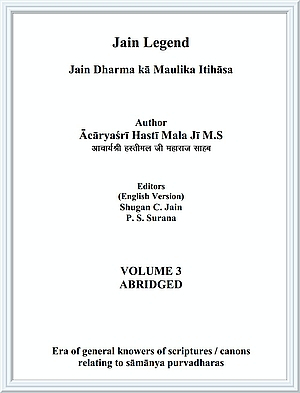(2nd to 11th century AD)
During medieval period in southern India, Gaṃga dynasty has a very important and significant place amongst the believers, supporters and promoters of Jainism.
Gaṃga dynasty ruled there from 103 till about 1600AD. During their rule, Kings, queens, ministers and chief of armed forces etc all supported, practiced and contributed their might to make Jainism prosper as a popular religion in southern India.
Their immortal contribution to Jainism
Twenty first King of this dynasty, King Rāya Malla-II Satyavākya (974984AD) ruled the region. His commander in chief, the great Cāmuṇḍa Rāya got a colossal 56 feet high standing idol from a single solid rock on Viṃdhyagiri in Śravaṇabelagolā village built in 980AD. This magnificent and colossal single rock cut 56 feet idol from the tip of toe to head is as on date also considered as one of the wonders of the world.
Cāmuṇḍa Rāya also built a huge and magnificent temple of Lord Neminātha built on Candragiri which is located just behind Viṃdhyagiri.
All kings, from beginning till the end of Gaṃga dynasty were firm believers of Jainism. These kings built a number of Jain idols, temples and caves from time to time and gifted them to Jain ācāryas.
The ancestors of Gaṃga dynasty
Dadiga and Mādhava were the founders of Gaṃga dynasty. Their guru, Ācārya Mādhava established the Gaṃga dynasty. While founding the Gaṃga dynasty, Ācārya Siṃha Nandi (anointed as Ācārya by Ācārya Mādhava) had both Dadiga and Mādhava cautioned them about the following seven conditions to keep Gaṃga dynasty alive and prosper.
- The day you stop observing these vows
- If you do not observe Jain doctrine in your life
- If you snatch others women or indulge in their enjoyment
- If you consume honey or wine
- If you establish relations with cruel people
- If you or your descendents run away from a battle field
- If you do not donate to the people affected by natural scarcities like famine etc.
If any one of these seven conditions is defaulted by any one in your dynasty, then the Gaṃga dynasty will be finished and extinct. All kinds of Gaṃga dynasty made these vows as the guru-mantra and essential part of their life and practiced them honestly in their life.
Kings of Gaṃga dynasty always kept these teachings of Ācārya Siṃha Nandi uppermost in their mind and displayed exemplary bravery and valour and kept the religious teachings foremost also. All these facts lead us to conclude that all the kings of Gaṃga dynasty except King Viṣṇugopa observed these seven vows.
Such example of a Jain monk and ācārya observing the five major vows, had accompanied the victory-march of a king cannot be traced in the entire history of Lord Mahāvīra's religious congregation. However Ācārya Siṃha Nandi did go with Mādhava and Dadiga in their quest for victory of Koṃkaṇa.
 Acharya Hasti Mala
Acharya Hasti Mala
